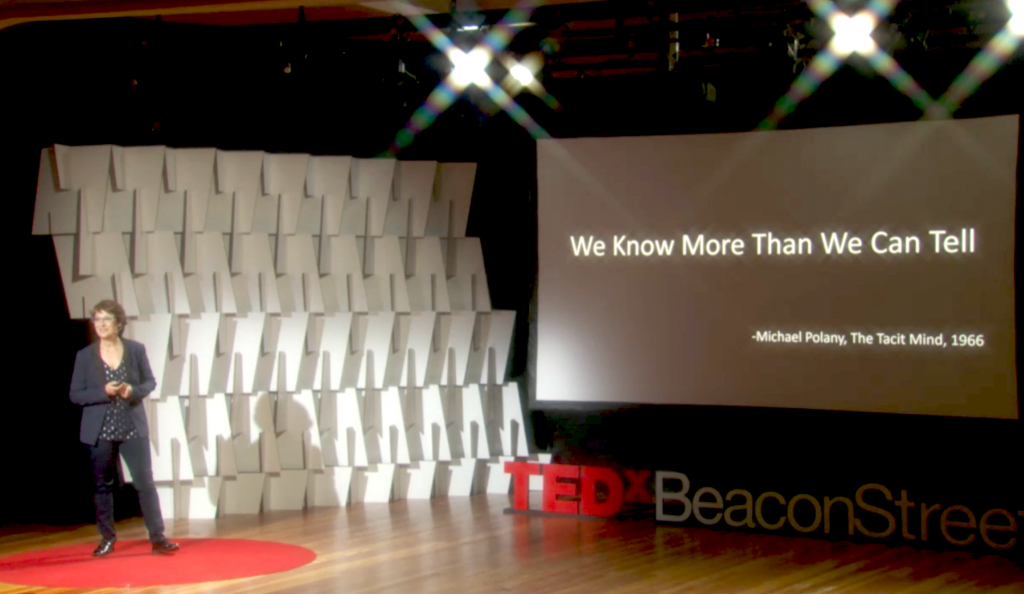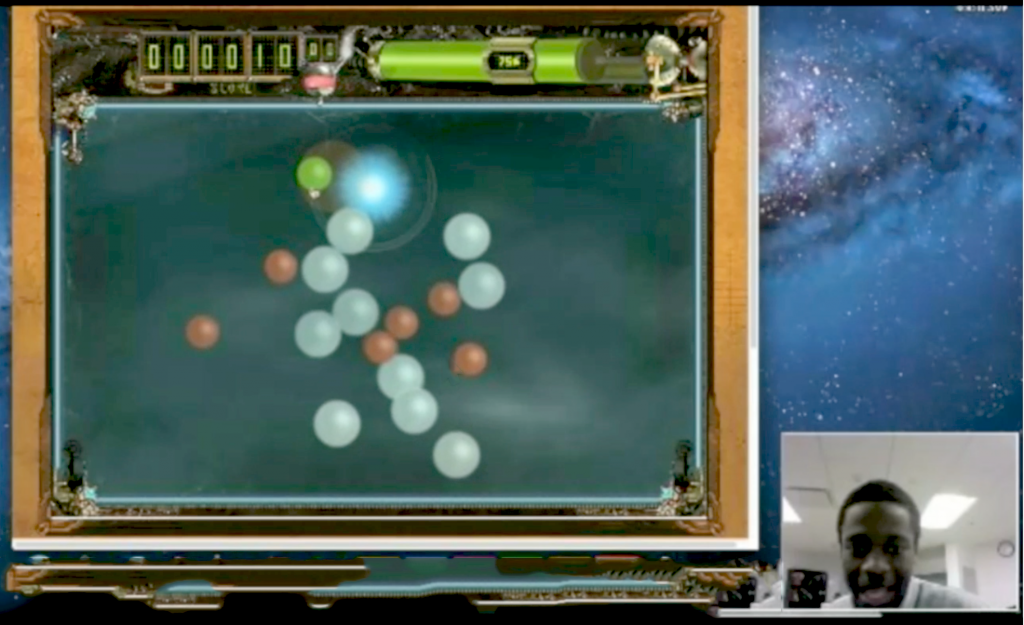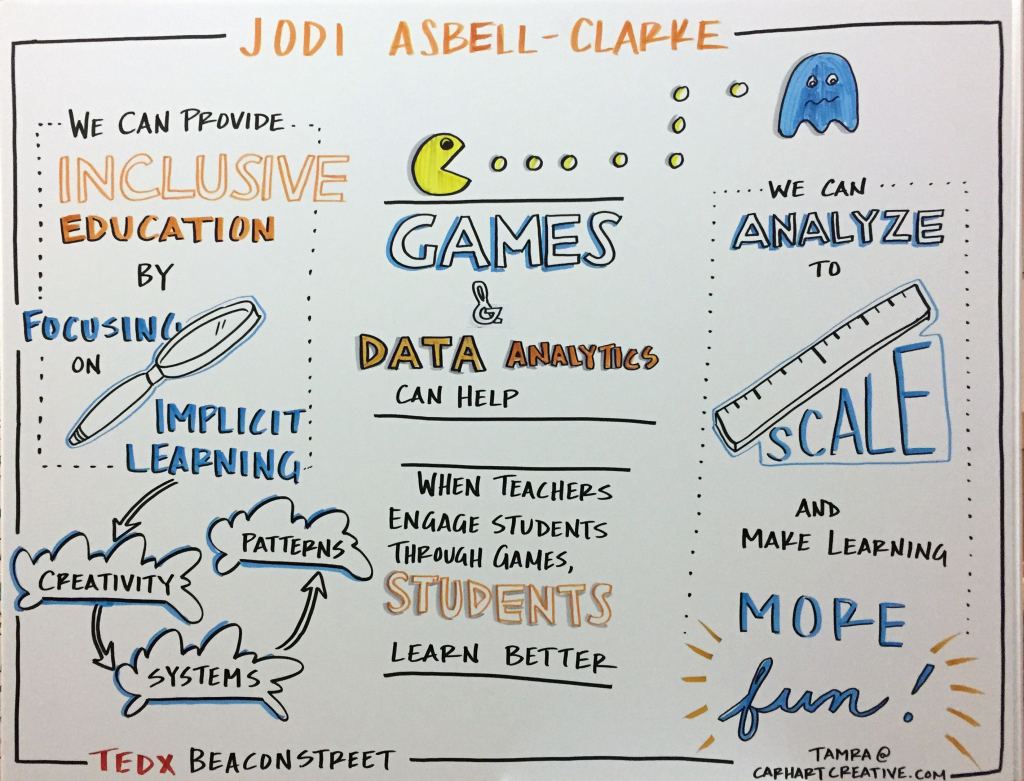Jodi Asbell-Clarke at TEDXYOUTH @ BEACONSTREET

On November 4, Jodi Asbell-Clarke was a speaker in TedXBeaconSt. Her talk, We Know More Then We Can Tell, addressed the issue of students who don’t test well, and her research into finding students’ implicit knowledge —knowledge which they demonstrate through their behaviors and actions, not just how they answer questions on a test.

Jodi and her team looks at the enhanced creativity and collaborative problem solving that is unique to some learners with ADD and the systematic thinking of some learners with autism, who happen to excel at problem solving with detailed pattern recognition. She imagines capturing the potential for disruption, creativity, and productivity that learners with Dyslexia – perhaps even a disproportionate number of them – are able to achieve. As she says, “You don’t have to do well on tests to be a great problem solver.”
Here’s an example Jodi presented.

This is a pretty typical test question from a high school physics exam – actually this is one of the easier ones from the ACT. This problem is asking about the constant motion of an object. There are terms and numbers and diagrams and an arrow pointing to the right. But there is NO moving object. To answer this question, I need to read this text, understand a bunch of terms and diagrams that I may or may not have seen before and then I have to recreate this scenario in my head and then figure out what the question is asking and how to answer it.
Let me show you a different way to assess what learners know. This is a game called Impulse that my team at TERC created for high school Physics learners.
In Impulse, players try to get their green ball in the glowing goal without crashing into the other balls. They use an impulse or a burst of force (indicated by the orange spot) to guide the balls. All the balls have different mass depending on their color and they all obey Newton’s law of motion and gravity.
Basically this game asks the learner to predict the same motion as the previous test question. The learner is not drawing arrows and calculating terms in an equation … but he is saying “ Let it Float… I’m gonna let it cruise…I’m gonna let it fly”

Or as Sir Isaac Newton would have said “The object in constant motion will stay in constant motion in the absence of an external force.” He might not say it like Newton, but his actions in the game can tell us that he gets it.
Players demonstrate knowledge in games — and we can use data mining to see this in their digital logs just like Amazon and Google have systems to predict what you want to buy next, we use automated detectors to see what kids know, not just what they can say, but what they know. And then we can use that information — their implicit knowledge — to help customize learning experiences for each individual student.
Our research at shows that when teachers connect what kids are doing in a game, to the science they are teaching in class — kids learn that science better.
Imagine a class where a Physics teacher gets an alert when his student starts consistently using the “let it float” strategy in Impulse, he can strike up a conversation about her gameplay, and follow up with “let me tell you what Newton said about that”.
And this doesn’t just work in physics. Our team is now studying how elementary and middle school kids build implicit knowledge of computational problem solving in an award winning learning game called Zoombinis. Zoombinis engages learners in a series of logic puzzles where players learn problem decomposition, pattern recognition and algorithm design – and we can watch it all through their gameplay. We are using data mining to provide teachers with information on the problem-solving strategies of each of their learners so that they can customize their curriculum to meet the needs of all their students.

I have been talking about how we measure implicit learning in games like Zoombinis and Impulse but it’s not just games. Anywhere people learn in a digital environment, they create data logs that we can use to look at what they know, and how they solve problems, and how they collaborate .
